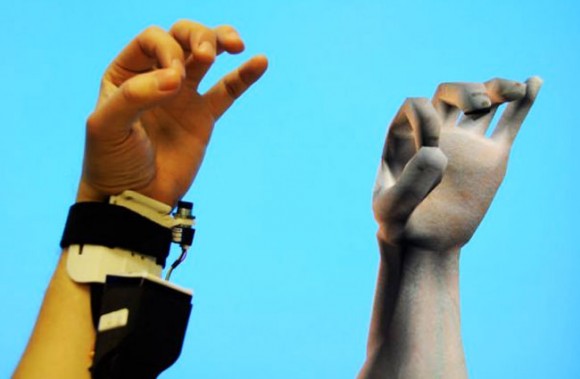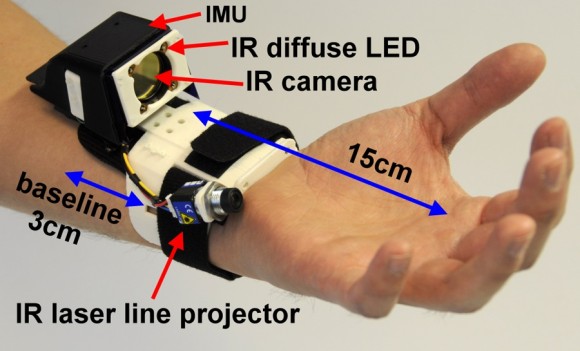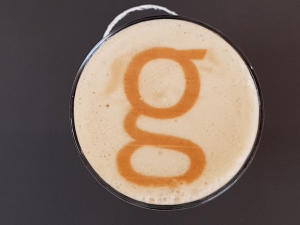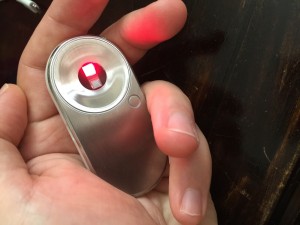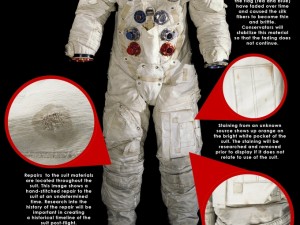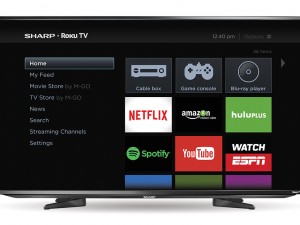Researchers at Microsoft Research Cambridge and Newcastle University have unveiled Microsoft Digits. Totally gloveless and strapped to the wrist like a watch, the device uses sensor technology that “…recovers the full 3-D pose of the user’s hand.”
Where as most virtual reality devices use a glove to interpret the motions of the human hand, Microsoft Digits are self-contained at the wrist using optical imaging relay movement. The digits can also be used remotely, which “finally takes 3-D interaction outside the living room.” The revolutionary Digits can also be used when the user’s hand is in a pocket.
With Microsoft Kinect and the rising interest for new generations of touch-free computing, the team that developed Digits were interested in a bare hands device for 3-D interactions that was lightweight and could have commercial applications.
The current prototype – which is just that – is quite bulky and primitive looking and was built using off the shelf hardware. The researchers began with an infrared camera and an IR laser line generator, but they “soon found themselves adding new data sources to enable even richer interaction possibilities.” In the future, the researchers hope that the device will actually be as small and as discreet as a watch giving it wider commercial availability.
In order to accurately match the movements of the human hand, researchers had to take a strong look at how their own hands worked. One of the device’s main achievements is a signal-processing pipeline that samples parts of the hand in real time. There are also two kinematic models that enable full reconstruction of hand poses from just five key points. Researches say that the most challenging was achieving natural-looking hand motions from a scarce sampling of the key points sensed by the camera.
This week the technology is being presented at the 25th Association for Computing Machinery Symposium on User Interface Software and Technology in the US. They are hoping the technology can be applied to smart phones and tablets. Perhaps one day soon we’ll be able to answer our phone when its buried at the bottom of our pocket or handbag.

